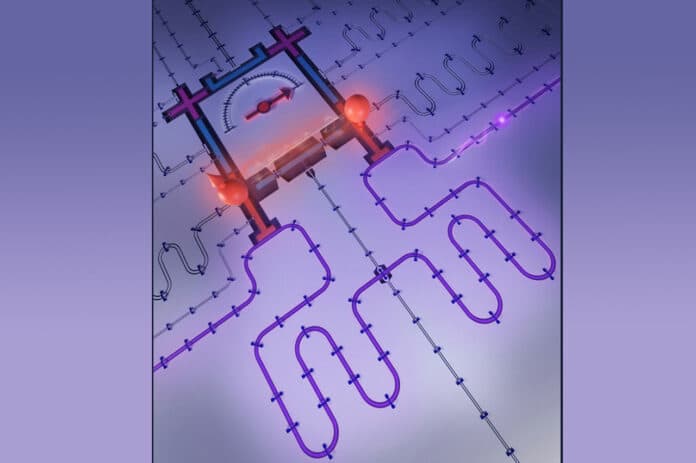In general, photons that travel across arbitrary nodes or resonant coupling of neighboring nodes facilitate quantum information transfer between them. The type of emitter, propagation channel, and receiver all affect utility.
Conventional methods of transmitting microwave photons have a low fidelity due to photon loss and are frequently unidirectional. In contrast, direct resonant coupling-based systems are theoretically bidirectional but typically can only support a small number of local nodes.
In a new study, MIT scientists have demonstrated high-fidelity, on-demand, directional microwave photon emission. They have developed a quantum computing architecture that will enable extensible, high-fidelity communication between superconducting quantum processors. Their approach guarantees that quantum information flows effectively more than 96% of the time.
A quantum network links processing nodes using photons that travel through waveguides. A waveguide can either be unidirectional and move a photon only to the left or right, or it can be bidirectional. This method is challenging to scale since each waveguide can only move photons in one direction, necessitating more waveguides as the quantum network grows. Additionally, additional components are frequently added to unidirectional waveguides to enforce directionality, which creates communication problems.
The solution is a waveguide that can support propagation in both the left and right directions and a means to choose the direction at will.
Scientists in this study demonstrated directional transmission, the first step toward bidirectional communication with much higher fidelities.
Bharath Kannan, Ph.D. ’22, co-lead author of a research paper describing this technique, said, “Using the architecture, multiple processing modules can be strung along one waveguide. A remarkable feature of the architecture design is that the same module can be used as both a transmitter and a receiver. And photons can be sent and captured by any two modules along a common waveguide.”
Aziza Almanakly, electrical engineering, and computer science graduate student in the Engineering Quantum Systems group of the Research Laboratory of Electronics (RLE) at MIT said, “We have just one physical connection that can have any number of modules along the way. This is what makes it scalable. Having demonstrated directional photon emission from one module, we are now working on capturing that photon downstream at a second module.”
To accomplish this, scientists develop a module consisting of four qubits.
Qubits can be used as photon emitters. Adding energy to qubits excites them, and in a de-excited state, they emit the energy in the form of a photon.
However, directionality is not guaranteed by merely attaching one qubit to a waveguide. Even though a single qubit emits a photon, its direction of travel is entirely arbitrary. Scientists use two qubits and a phenomenon called quantum interference to ensure the emitted photon travels in the right direction to get around this issue.
The process entails getting the two qubits into a Bell state, which is an entangled state of single excitation. The left and right qubits are both excited in this quantum mechanical state, which has two components. Both features coexist, but it is uncertain which qubit is excited at any given moment.
Qubits in an entangled Bell state causes the photon to emit effectively to the waveguide at the two-qubit locations simultaneously. These two “emission paths” interfere with each other.
The resulting photon emission must move to the left or the right depending on the relative phase within the Bell state. The scientists decide which direction the photon will travel through the waveguide by setting the Bell state with the appropriate phase.
Almanakly says, “They can use this same technique, but in reverse, to receive the photon at another module.”
“The photon has a certain frequency and energy, and you can prepare a module to receive it by tuning it to the same frequency. If they are not at the same frequency, then the photon will pass by. It’s analogous to tuning a radio to a particular station. We’ll pick up the music transmitted at that frequency if we choose the right radio frequency.”
Scientists now want to connect multiple modules and use the process to emit and absorb photons. This would be a major step toward developing a modular architecture combining many smaller-scale processors into one larger-scale, more powerful quantum processor.
Yasunobu Nakamura, director of the RIKEN Center for Quantum Computing, who was not involved with this research, said, “The work demonstrates an on-demand quantum emitter, in which the interference of the emitted photon from an entangled state defines the direction, beautifully manifesting the power of waveguide quantum electrodynamics. It can be used as a fully programmable quantum node that can emit/absorb/pass/store quantum information on a quantum network and as an interface for a bus connecting multiple quantum computer chips.”
Journal Reference:
- Kannan, B., Almanakly, A., Sung, Y. et al. On-demand directional microwave photon emission using waveguide quantum electrodynamics. Nat. Phys. (2023). DOI: 10.1038/s41567-022-01869-5
